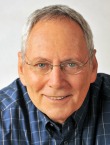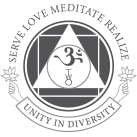Sivananda Bahamas Blog
Expand Your Horizons …
Our Blog
Pain as a Teacher: Listening for Meaning, Message, and Opportunity
by Dr. Paul Epstein, ND
Everyone wants to get rid of their pain. But for many individuals with chronic pain symptoms, the healing process requires the opposite: opening to the pain, listening to the pain, and seeing the pain as a teacher and guide. Engaging in a healing process integrated with therapeutic modalities and treatments is also necessary, but the emotional part cannot be ignored.
From both my clinical work over the years with patients in pain and from my personal life, I have come to understand that we can sometimes cause ourselves more pain and suffering with our efforts to eliminate them. However, deep healing happens when we can heal the underlying cause of pain — by having the courage to face it, allow it, and find its meaning and message.
Strangely and paradoxically, the times in my life when I surrendered to my deepest pains were also my deepest healing moments. This principle of pain is universal, whether in a physical, mental, emotional, or spiritual context.
Treating patients with certain chronic physical pain symptoms and syndromes, such as migraines, tension headaches, fibromyalgia, irritable bowel syndrome (IBS), or chronic back, neck, pelvic, and abdominal pain, requires a mind-body integrated approach. For complete healing, it’s important to integrate the physical, psychological, and spiritual aspects in diagnosis and treatment. Mindfulness meditation, guided imagery, stress counseling, contemplative psychotherapy and journaling, and narrative medicine are some of the mind-body therapies and techniques that work effectively for individuals experiencing chronic pain.
The Mind Masks Emotional Turmoil with Physical Pain
John Sarno, MD, specializes in the diagnosis and treatment of pain has pioneered this clinical understanding of the mind-body pain connection and states how he learned that emotions that cannot be tolerated must be repressed. He says, “the mind chooses to mask emotional turmoil with physical pain,” and “what emotions could be so terrible as to induce the brain to subject someone to severe physical pain and frightening neurological symptoms? The answer to this question is basic not only to the understanding of these pain syndromes but to the whole range of psychosomatic disorders.”
He calls such pain disorders tension myositis syndrome (mind-body syndrome).
Howard Schubiner, MD, further developed the work of Dr. Sarno, based on the premise that “chronic pain is often caused by nerve sensitization and learned nerve pathways triggered by stress and emotions (rather than actual tissue destruction)…that emotions are very powerful forces that can cause physical symptoms and this pain can be unlearned.” To relieve the pain, one must find the underlying cause.
A Gastrointestinal Function Disorder Is a Mind-Body Syndrome
A thin, 21-year-old woman was seen with symptoms of chronic IBS, anxiety, and mild depression. After her intake history, I began integrating a basic naturopathic, holistic approach of diet and stress counseling.
I began exploring her biography and family history in greater depth, as issues with her family and father specifically were her main stressors. Her emotions included shame, hypervigilance, fear, indecision, tense shoulders, anger, anxiety, inability to have fun, crisis-oriented living, and IBS. She described her IBS symptoms by saying that IBS disgusted her and made her feel sick to her stomach. She used the exact same words and phrasing in a guided imagery session to describe how she felt about her abusive alcoholic father. Although she had seen many physicians over the years, the issue of her coming from an alcoholic home had not been previously addressed or integrated in care beyond suggestions of stress management.
She never told her story about the burdens of repressed emotions she was carrying and the somatic memories of stress and abuse living in her body and manifesting as IBS. We began to engage her to participate fully in a healing process and to face and explore this issue directly for the first time. Mind-body therapy involving counseling, mindfulness meditation, guided imagery, journaling, and support groups, integrated with individualized nutritional and herbal digestive support, resulted in reducing and managing her symptoms, followed by healing, transformation, and full recovery.
“Leave him alone. He only needs to feel his pain.”
A brief biographical note may give insight into how I came to be this kind of physician, supporting patients to explore, open up to the truth of their pain, and release the emotional conflicts and burdens that are causing pain and disease.
As a soldier in World War II, my dad cleared the battlefields of dead bodies, weapons, and equipment, while making sure all body parts and name tags were placed in the right body bag. After the war, some of the chronic symptoms he suffered from were nightmares, anxiety, and rage. As a child, there were times when I could see, hear, and feel his pain and the burden of terror in his eyes and voice. No one asked, and he did not tell about what had happened. His heart ached with chest pain, and he developed heart disease. At age 57 years, while undergoing “preventive” bypass surgery, he died on the operating table.
My sense is that they were bypassing not only his clogged artery but also the truth of his pain, trauma, and somatic memories, eventually causing disease and death. I came to understand that, while no one was asking about and listening to his biography of stress, trauma, and repressed emotions, my dad’s heart and body remembered and bore the burden of his unhealed, invisible wounds. After his death, I had a recurring dream in which I am holding my father in my arms as physicians are coming to take him away, pulling him out of my arms, while I am screaming to no avail: “Leave him alone. He only needs to feel his pain.”
My work has become not just to help patients get rid of their pain. It is to help them open to it, feel it, heal it, and free themselves from pain — to “unlearn their pain.”
Meditation for Listening to and Facing Painful Truth
For pain syndromes that one must learn to “live with” and “be with,” a mindful and compassionate approach to meditation can be effective in lessening pain and suffering. When physical pain is unavoidable, meditation practice can ease mental suffering, and one learns to appreciate the adage that “pain is inevitable, suffering is optional.” We can learn to relate to pain and choose how to respond.
Pain and difficulties are learning opportunities. To get in touch with what is troubling you and to open to it with wisdom and compassion, here is a basic exploration exercise that I often include in my workshops:
- Find a time when you have nothing you have to do, when you will not be rushed or interrupted.
- Sit in a quiet space in a relaxed position. You may wish to close your eyes.
- Tune in to the rhythm of your breathing, becoming aware of each intake and outtake breath.
- Notice the body relaxing and the mind becoming calm.
- Allow yourself to be open and receptive.
- Begin to ask yourself a few questions, and patiently listen for the response from your inner wisdom: (a) If my symptom, issue, or pain has a meaning and a message, what might that be? (b) Have I suffered by my reaction and response to it? What have I added? (c) Is it asking me to let go of something? Can I accept the things I cannot change? (d) Is there an opportunity and lesson in this situation? Where is the healing?
Ask one question at a time. Do not rush from question to question. Do not judge the answer. Know that you may get different answers at different times when you do the exercise.
After you have asked all the questions, imagine opening your heart to receive and welcome your wounded parts and the burdens they carry. Embrace them with mercy and awareness by gently and slowly repeating the following phrases (or use your own meaningful phrases):
- I care about my difficulty.
- I welcome my difficulty into my heart of compassion.
- I accept you, my difficulty, just as you are with unconditional friendliness.
- May I have courage and be free from fear.
- May I be peaceful with what is happening.
- May I be free from suffering.
Repeat these phrases as often as you wish, and then take a minute to feel what change, if any, this exercise has brought about in your physical and mental perceptions of the pain or difficulty.

Paul Epstein, ND, graduated from the National College of Naturopathic Medicine and has been a pioneer and leading voice in mind-body integrative medicine for more than 30 years. His Yoga Teacher Training with Swami Vishnudevananda in 1977 affirmed his understanding that authentic healing occurs only when the person’s whole being is engaged. He teaches and trains others in mindfulness, healing, and integrative medicine and is the author of Happiness Through Meditation and many articles.








